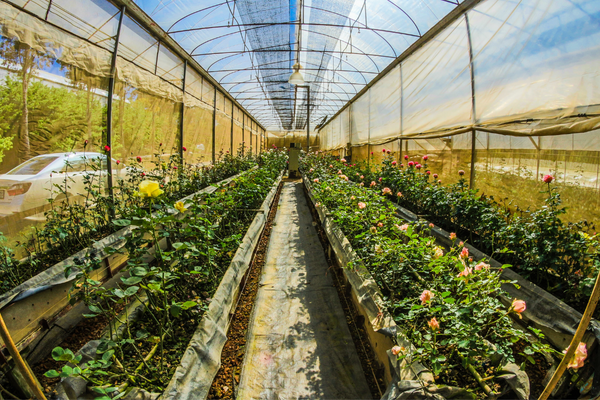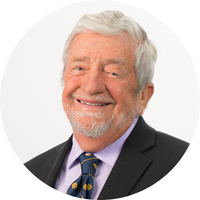
Does it make sense to you for consumers to pay significant premiums to purchase organic fruits and vegetables? What are people getting with organically produced produce that justifies the additional expense? Do you buy organic fruits or vegetables?
I do not believe it make sense to pay the premium price for organic fruits and vegetables. Organic products are mostly devoid of low levels of herbicides and pesticides, however in conventional products the residue levels are very low. Many organic products have slightly higher levels of antioxidant phenolic compounds, but the levels are likely not enough higher to render measurable health benefits.
I am not aware of any studies that demonstrate long term benefits of consuming organically produced products. The marketing of these products has been an overwhelming success. The consumers who pay the premium price for these products get a feel-good benefit - sort of an expensive placebo effect.
What does the future of food and flavors research look like? Is it something you would recommend young chemists consider as a career?
The future needs for food and flavor research present many fascinating and I believe offer many exciting opportunities. Consider that by 2050 we need to feed over 9 billion people. We must accomplish this with quality nutritional products that meet taste expectations. We need to accomplish this in a background where we reduce ruminant animal protein. Ruminant production is a major producer of greenhouse gas in the form of methane. Along with CO2 from fossil fuel use there is a major impact on climate change. Reducing animal production resulting in methane production can contribute significantly to slow global warming. This brings about the conflict that as societies become more affluent, they want to consume more beef. Food research must continue to produce more products like the impossible burger to meet the desires and needs for food production.
You were an avid climber of serious mountains – the ones with names that everyone recognizes. How did you get interested in that?
I found that mountaineering provided me with incredible piece of mind and release from everyday tensions. I started out backpacking when I lived in California and the peaks and targets kept getting bigger. I enjoy the challenges and the eclectic cast of characters that make up the international climbing community.
Among others in the United States I have climbed Mt Whitney, Denali (McKinley), Mt Rainier and two thirds of the 14ers in Colorado. Internationally I climbed continental summits Aconcagua (South America), Elbrus (Europe), Kosciusko (Australia), and Kilimanjaro (Africa). On Everest I turned back 2500 feet from the summit.
Had you started the quest earlier in your life, do you think you could have conquered the Seven Summits – the highest mountain peaks of each of the seven continents?
Not sure about this. A bigger limitation was time and money. It is an expensive and time-consuming activity. After the Everest trip, I was offered the opportunity to go back but could not take another 3 months off from work. The odds of success are much higher on the second try.
Under what circumstances – if any - are artificial sweeteners used in diet sodas harmful to humans?
There is growing interest in that question. I think one should ask what are the benefits? Clearly, they reduce sugar consumption and the associated calories. It appears that many consumers make up the calories with other foods. My view is that getting away from sweetened products in general is a good thing. Diet drinks reinforce the “sweet tooth” which we should try to suppress. Unsweetened carbonated drinks are now gaining acceptance and they may be good alternatives to intensely sweetened drinks.
In your work in the field of food and flavors, what was the most difficult technical challenge you confronted? And how did it turn out?
When P&G was developing Olestra, we at Nabisco thought it unlikely that we could access olestra if it was commercialized. If it was successful in snack food and cookies it would have been a major threat to our businesses. We came up with the idea that a partially digestible fat substitute might be better than zero digestibility like Olestra. We were starting years behind Olestra so we had to move fast and come up with solutions that had a chance of regulatory approval and met our needs.
We developed two alternatives. One was a modification of the glycerol backbone that could be made to function like any commercial fat but only delivered about 3 calories vs 9 for normal fats. We took it through complete testing for safety which initially looked terrific. At the time Nabisco was going through a leveraged buyout and the project was shelved. Later we discovered that the modified backbone accumulated in the brain, so it would never have made it as a product.
The second option was Salatrim, a low-calorie fat that was approved and had some success, however it was expensive to produce. Ultimately, nutrition research has established that fat calories are less important than simple sugars and refined carbohydrates.
While at Nabisco, you assembled and led the Fundamental Science program - a group of 59 diverse scientists who provide scientific support to Nabisco’s divisions. What did you learn about leading teams from that experience?
Assembling and leading that group was an incredible experience. I was very fortunate that at the time Nabisco provided me with the backing to hire the best scientists in the field. I learned quickly that my job was to support and encourage the scientists and various teams to do their jobs. One of the team described it that I “planted the seeds and watered the flowers letting them grow.” My role was to provide a good environment for the research team and the operating divisions who convince upper management of the benefits of our research projects.
As a leader I tried to help all the team members reach their potential. Perhaps most important was that the scientists were hands-on in the operating plants for different divisions. We encouraged all of the scientists to spend time on-site in the plants to understand issues and help solve problems.
Having spent time in both academia and industry, what does industry not ‘get’ about life in academia, and what does academia not ‘get’ about life in industry?
Over the last 40 years government support for food related research has dwindled suggesting that industry should fund more academic research. At the same time, extramural funding from industry has also been reduced. This raises the point that more cooperative research between industry and academia represent considerable unrealized potential. Industry does not often see the need for basic or early phase studies. It is difficult for them to support early trials such as a preliminary clinical trial of a new ingredient.
Academics frequently come to industry to support trials that lack commercial potential. Often academics are interested in materials that may be beneficial but are too scarce or expensive to commercialize. Both industry and academia have difficulty in sharing intellectual property. Who owns what and royalties and confidentiality agreements often are stumbling blocks.
Based on your extensive experience with the ACS Journal of Agricultural and Food Chemistry, and the ACS Agricultural and Food Chemistry technical division, how would you characterize the level of coordination between the two as they seek to serve largely the same community of chemists?
From my experience the cooperation between JAFC and AGFD is exceptional. Symposia papers or proceedings are frequently published in the Journal. One problem is that the Division likes to publish symposia as books which is a significant source of income for the Division. Journal publication has the advantage that is faster than symposia series books and publication in JAFC are often considered better for academics than book chapters.
Of late, you have focused efforts on finding food ingredients to find new ways to combat obesity and diabetes. What will it take for the U.S. to begin making serious progress in this area, which affects many tens of millions of Americans
Looking at the continued increase in obesity and diabetes, I am somewhat pessimistic that it will change. We need to change focus from weight loss and establish improved means for individuals to prevent excessive weight gain.ns With the abundance of available food, it is difficult to reduce overeating. A glimmer of hope is the increased consumption of pulses and other plant-based foods.
Unfortunately, products like the veggie burgers do not offer enough caloric reduction and increase in fiber but it is a step in the right direction. Until there are economic incentives to alter consumption patterns it is going to be a hard sell
What tasted really good to John Finley when he was a child? What about the grown-up John Finley?
I have always liked almost any type of fish or seafood. It was not readily available as a kid in upstate New York, so I think it is wonderful now to have easy access to fresh seafood. As a kid, meatloaf was the consummate comfort food. I think it still is high on my like list, maybe at a lower frequency.

John W. Finley’s research has elucidated the role of food chemistry in developing health-enhancing foods. His specific interests focus on developing low-calorie foods and ingredients with high culinary quality. In recent years, Finley has increasingly pursued food ingredients that provide novel avenues to combat obesity and diabetes. Additionally, he has an active program on reducing chronic inflammation with dietary intervention.
Finley has an extensive career in government, industry, and academia. After beginning his career as a research chemist at USDA’s Agricultural Research Service in Berkeley, California, Finley assembled and led the Fundamental Science program at Nabisco. Finley served as the Head of LSU Food Science Department where he conceived and developed a business incubator that specializes in supporting and developing emerging food companies and ventures.
Finley is a Councilor of the American Chemistry Society’s (ACS) Division of Agricultural and Food Chemistry. He was named an ACS Fellow in 2011.
This article has been edited for length and clarity. The opinions expressed in this article are the author's own and do not necessarily reflect the view of their employer or the American Chemical Society.
Copyright 2019 American Chemical Society (All Rights Reserved)







